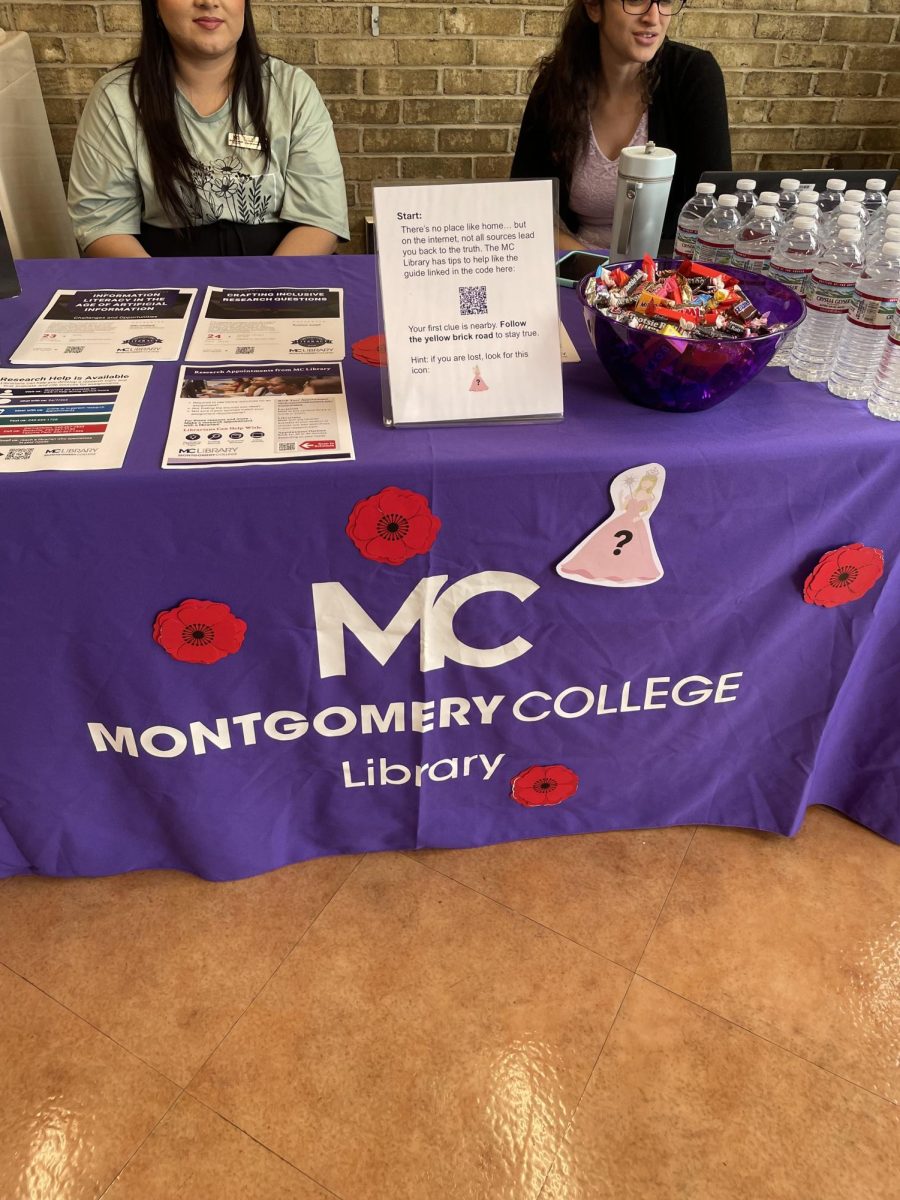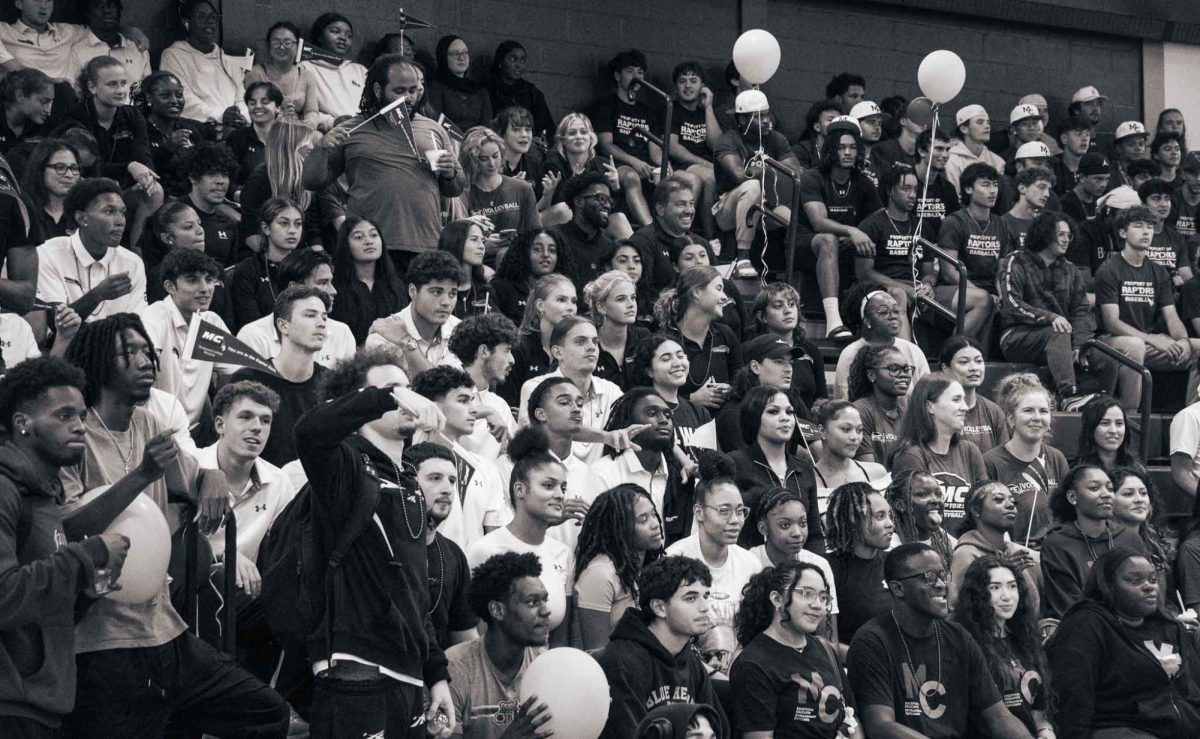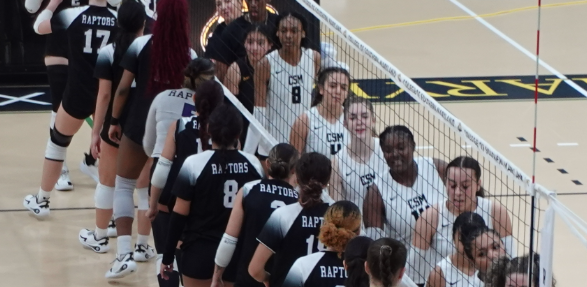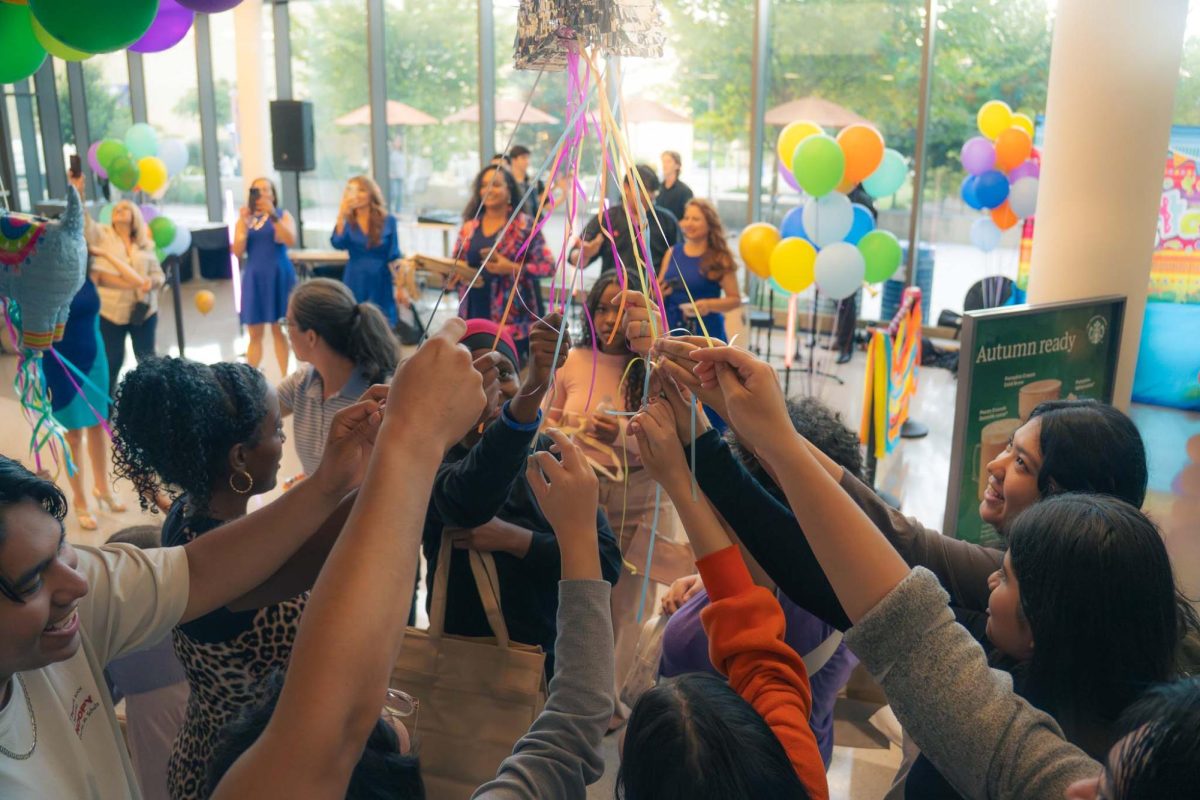SPIFFY Clothing Closet
“Smart Professional Intangibles Free for You,” or SPIFFY, launched in Fall 2023, a free student-led clothing closet at Montgomery College’s Rockville campus. What began as a simple resource for professional clothing quickly grew into a vital, community-driven hub offering students hygiene products, food, and even small furniture, run by students, for students.
Recently, this once-grassroots initiative has faced administrative shifts that disrupted its original mission. Changes in management and lapses in communication have left many students feeling confused, frustrated, and distanced from the very project they helped shape. As SPIFFY moves under the oversight of Student Affairs, this story looks back at how the project came to be, what has changed, and the credit still owed to those who built it from the ground up.
From Assignment to Impact: How SPIFFY Began
SPIFFY began in Spring 2023 as a classroom assignment. Debby Safra, a former Montgomery College (MC) student, was creating a community-oriented project. Alongside co-founder Campbell Walsh and guided by Political Science Professor Gregory Sember, she envisioned a student-run clothing closet to support students in need.
Through the summer and into the fall, they worked tirelessly to bring that vision to life. The team launched SPIFFY in November 2023 as a service-learning project under the Office of Student Life. With limited resources but strong determination, the team secured a small space, borrowed clothing racks from the theater department, and began collecting donations. Sember reached out to faculty and administrators, who helped spread the word and encouraged donations. “There were faculty, deans, and counselors who were really enthusiastic—generous givers,” he said.
Professor Sember attempted to secure work-study compensation for volunteers, but the college initially delayed approval. He created service-learning jobs and began the process of getting students paid under federal work-study. However, the college’s financial aid office didn’t approve them in time. “I created service-learning jobs and went through that process, so we were going to actually get some people that were paid under federal work-study, but [the financial aid office] never approved,” he explained. It wasn’t until March of the following year—a semester later—that they started to work with students on financial aid, with the help of Employer Relations Coordinator Roberta Buckberg and several persistent students.
The beginning of the Fall ‘24 semester saw heaps of donations coming in, and the closet’s reputation grew. The mission expanded beyond professional attire. “We became kind of a jack of all trades and a master of none,” Sember said. Students inspected, washed, and mended every item to ensure quality. Sember even picked up a part-time job at a retail store, Hollister, using his employee discount to purchase brand-new clothing. SPIFFY also received grants from the college to support basic needs, and the Student Wellness Center began supplying essentials like bras and menstrual products.
By November 2024, just a year after its first opening, SPIFFY had given away “10,127 clothing, furniture, and hygiene items worth approximately $141,778 to the MC community” according to a statement previously available on the SPIFFY page of the MC website. That specific information has since been removed, but a screenshot preserves the original wording.

SPIFFY opened every Wednesday and quickly became a familiar, welcoming space at the heart of campus. “When I first visited SPIFFY, I thought it was a very cool and inviting space,” said MC student Madeline Watson. “The students and Professor Sember always had a smile on and truly were passionate about donating their time to the SPIFFY closet, which made it a space that you wanted to go to.” What made SPIFFY stand out wasn’t just its practical benefits; it was the sense of ownership and purpose the students felt. They built it, ran it, and nurtured it.
Building a Resource, Building a community
What truly sustained SPIFFY was the dedication of its student volunteers, some of whom contributed not just their time, but their own money. Francesca Leonard, a student who joined SPIFFY after noticing the lack of feminine hygiene products, acted. She would go out and buy men’s and women’s hygiene products for SPIFFY to give away when it would open. Student volunteers reflected the spirit of the project by seeing and responding to needs firsthand. “We weren’t just following a plan, we were building it together,” said Isari Kodithuwakku, a former volunteer. “This is what made the project so responsive, inclusive, and passion fueled.” former volunteer Santina Cannetti recalled, “We made personal connections with people who came by more than once and got to know them. It wasn’t just a business; it was people helping people.” MC student Kayla Matibag emphasized how “SPIFFY came in clutch many times, when I needed period products or missed out on breakfast. I was able to take home a few clothing items that I wouldn’t have been able to afford or find in retail stores.” SPIFFY wasn’t just another resource; it was a testament to the strength and creativity of student leadership.
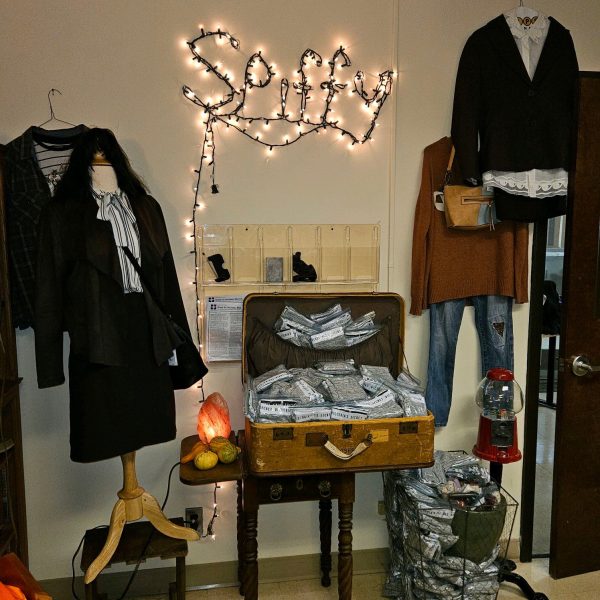
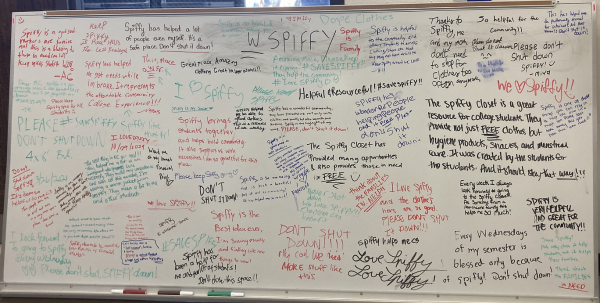
Rising Conflicts
What began as a grassroots effort run by a small group of students quickly evolved into a lifeline for many across campus. Near the end of the fall semester, SPIFFY’s growing visibility caught the attention of Montgomery College’s administration. Concerns about liability, oversight, and scalability entered the conversation. Former SPIFFY volunteer Isari Kodithuwakku stated that “There was not any meaningful support or guidance in place before the administration became involved. We were never approached with invitations for mentorship or access to more resources, which would have helped us work through issues such as liability or scalability.” Former volunteer Alex Alexiev added “If SPIFFY stayed student led, I have no doubt in my mind that we as the student body could handle its continued growth… all we needed was a little faith and respect from college management. Regrettably, we received neither.”
Eva Wicks, who worked in Student Life while observing SPIFFY’s development, shared: “I think his [Professor Sember’s] leadership will be missed… from the things I’ve heard and the impact he still has on previous students that don’t even go to school anymore… he means something to the college.” She added, “Honestly, I think of it like this: who cares what the school thinks? What matters is what the students and the alumni think.”
In response, a bulletin board was placed in the closet space, allowing students to share thoughts and fears about a potential takeover. Many worried that institutional management would bring restrictive rules and dilute SPIFFY’s original mission. Francesca Leonard, who was preparing to take over as student manager for Spring 2025, expressed concerns about how changes in management could affect the personalized and student-driven nature of SPIFFY: “We’ve realized how much of an impact it has had on students, especially those who come from low-income families or can’t afford basic needs… it saved them,” she said, emphasizing how crucial it was for SPIFFY to stay true to its original, student-led vision.
“I just feel like they need to bring it back for the students of need and for the students who just wanna go there and get some nice clothes,” said Eva Wicks. “It should be accessible to everyone in our community… but the college is kind of being ignorant to that, which isn’t very appreciated.”
Former volunteer Santina Cannetti stated, “We made personal connections with people who came by more than once and got to know them. It was not just a business; it was people helping people.”

The Transition: Confusion and Closure
SPIFFY’s final opening under Professor Sember and the original volunteers occurred in early December. Over winter break, hopes lingered that students would still have a role in guiding the project. However, on January 28, 2025, a meeting held by Dr. Edmund Cabellon, that was expected to discuss the future of the closet ended up revealing that SPIFFY would be transferred to Student Affairs for management. As Professor Sember later shared, the meeting, which was initially planned to explore the closet’s future, had already been decided, Student Affairs would take over. With Professor Sember stepping down, students remained hopeful for a smooth transition, but SPIFFY’s doors did not reopen. While no official announcement was made by the college, students were made aware of the meeting and the upcoming transition.
Weeks passed. Donations began piling up outside the closet, untouched. Winter temperatures dropped, and the absence of warm clothing distribution was deeply felt. “Multiple people in [my] classes would constantly ask if they could borrow coats or sweatpants from the closet and questioned when it would be opening,” previous SPIFFY volunteer Francesca Leonard said. Still, no word came from the college. Student volunteers continued reaching out for answers, but no one in Student Affairs was officially in charge of the project, leaving them uncertain about next steps. For many students, the delay and lack of communication felt frustrating, especially given SPIFFY’s rising visibility and demand at the end of the previous semester. Students who had dedicated their time and energy to the initiative felt sidelined. Frustrated, students acted.
The Reopening: Rebuilding Without Recognition
On February 24, a SPIFFY Instagram page launched by the original volunteers to share updates and raise awareness about the closure. That same day, Francesca Leonard created a petition calling for transparency and reinstatement of student leadership, allowing students to resume operations immediately, began circulating. Student Government Association (SGA) expressed support for the cause. The following day, according to Francesca, SPIFFY was cleaned and reopened by select faculty and student leaders, though some original organizers said they were not informed or invited to participate in the transition. While the reopening was a step forward, the lack of communication left many wondering why those who had built the project were excluded from the process.
While some students welcomed SPIFFY’s reopening, many were left stunned. Why were students who built the project left out of the transition? Why were the new hours suddenly moved to when fewer students are on campus? What would the new volunteer process look like? What were the donation procedures?
None of these questions had clear answers. Student Affairs had not been transparent about the change, a point emphasized by former volunteer Will Hinkeldey, “There was a complete lack of communication to the students.” Many of the original volunteers chose not to return. The SPIFFY they had built, with a deep sense of trust, collaboration, and shared ownership, had changed.
On March 10, the Rockville SGA held an open meeting with Interim Senior Vice President for Student Affairs, Dr. Edmund Cabellon. Former SPIFFY volunteers attended, seeking answers. When asked why SPIFFY had been shut down for so long at the start of the semester, Dr. Cabellon explained that the administration needed time to “figure out the data involved, who ran it, all the things,” noting that it had been led by Professor Sember and several students. But for student volunteers, those concerns did not feel like genuine efforts to protect the project. “I think they were used as justification to intervene,” Will Hinkelday said. “There had already been talks about expanding to other campuses with the same design, student-run, with a [professor] to oversee.”
Dr. Cabellon justified the shift to Student Affairs by saying that “Once an idea gets to a certain space or time, it needs to scale.” According to Dr. Cabellon, the long-term goal is to replicate SPIFFY across all three campuses by Fall 2025, but he emphasized that the college needed more time to build the necessary infrastructure.
Attempts to obtain additional comments from Dr. Cabellon were unsuccessful. Follow-up inquiries to Ms. Janee McFadden, Dean of Student Engagement for the Takoma Park/Silver Spring campus, were instead answered by Marcus Rosano, Director of Media and Public Relations. On behalf of the college, he stated: “While individual administrators may not have previously been involved in daily operations, the decision to move SPIFFY under Student Affairs was made to strengthen its impact, ensure sustainability, and better align with the College’s student support goals.” When asked again about the timeline for expansion, a central reason given for the closure, Rosano replied: “The College is exploring opportunities to expand SPIFFY to additional campuses and broaden its services. As of this time, there is no specific timeline for expansion, but we will certainly communicate any decisions with the College community.”
Additional questions were sent to Acting Collegewide Dean of Humanities Jennifer Haydel, Dr. Alice Santoro (Associate Dean of Student Engagement at Takoma Park/Silver Spring), and Marcus E. Peanort (Dean of Student Access at Germantown), asking for updates on the Fall 2025 launch, donation processes, space allocation, and the future role of student volunteers. No responses have been received to date.
Ongoing Issues and Moving Forward
Rosano also noted that the College “encourages engagement through student government and direct communication with Student Affairs.” However, current volunteers report minimal involvement from higher-level administrators, raising questions about the level of collaboration in what is described as a student-led initiative.
Although the transition has been described as strategic and thoughtful, several former volunteers have characterized the experience differently. Former volunteer Isari Kodithuwakku stated that “the transition was abrupt and felt like it was ripped away from the people who actually cared about it… Without approaching us or providing tools to help us navigate those issues on our own, this has felt like a power-fueled takeover rather than a partnership.”
Since reopening in late February, a new team of student volunteers has worked hard to rebuild SPIFFY’s momentum. The closet initially reopened with Friday hours, a change made without consulting original volunteers and one that affected accessibility for some students. Following feedback and discussion within the student community, the hours were shifted back to Wednesdays from noon to 4 p.m., a decision made by the student volunteers.
During the early stages of the transition, Peter Chamberlain, an Administrative Aide in the Office of the Collegewide Dean of Student Success, provided informal support to the new team. Though not officially assigned to lead SPIFFY, Chamberlain helped navigate reopening challenges. “This is a student-led initiative. This is a passion project that really means a lot to this community,” he said. He emphasized the importance of continuing SPIFFY’s mission as a reliable student resource. “SPIFFY is important—not just because it is a resource, but because it represents something. Community college is a democracy… it has to be open access. You need free clothes? Come on by.”
Current volunteers acknowledge the transition has presented challenges. It was kind of rocky at first,” said student volunteer Akhyan Tamang. “We didn’t know what to do—it was just thrown at us.” student volunteer Mateo Nikitin added, “The faculty weren’t given much notice before being put under responsibility… it was all on short notice.”
Communication Gaps and Persistent Challenges
SPIFFY student volunteer Cindy Le shared that the volunteers do not receive much information from Student Affairs. “I haven’t heard much. They don’t tell us at least,” she said. Much of the operational decision-making, including changes like the opening dates after students expressed concerns of accessibility, has happened informally through conversations with Chamberlain. His reliability and dedication have allowed SPIFFY to adapt to students’ needs. The lack of formal updates has left some volunteers questioning the College’s characterization of SPIFFY as a student-led initiative, as they contradict Rosano’s statements.
Volunteers are also facing issues the original team had already addressed—like missing hygiene supplies and limited clothing options. “We’re doing what we can with what we have,” Cindy said. “We still operate mostly through donations, and we don’t get to choose what we get. But if I hear someone’s looking for more shoes, I try to make sure we sort through those first.”
Hygiene supplies are especially hard to come by. Former volunteer Francesca Leonard used to make custom period packets with her own money, something the new team is now trying to rebuild from scratch. SPIFFY volunteers like Akhyan are brainstorming partnerships: “If students really want hygiene products, we could collaborate with Wellness. I bet they’d give us stuff for free.” Cindy noted, however, that even Wellness has faced funding shortages lately.

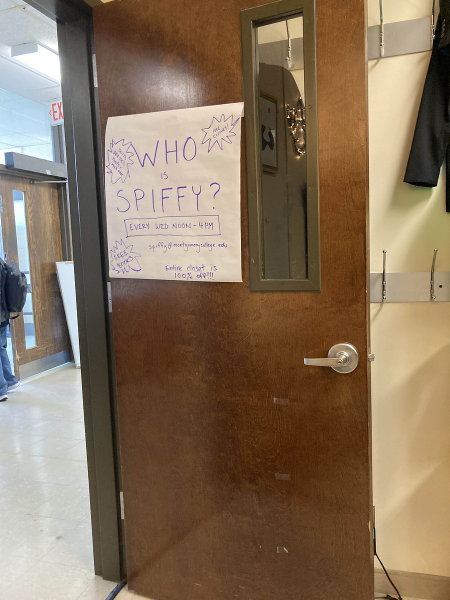
Looking ahead, the team hopes to recruit more volunteers, improve advertising and restock more in-demand items, especially summer clothes and men’s basics, which are currently lacking. Meanwhile, the College continues to cite future expansion as a reason for its takeover—but little progress has been made. “Their plan was to open SPIFFY on all three campuses,” said Akhyan. “That’s all I’ve heard.”
Conclusion: What Keeps SPIFFY Alive
SPIFFY is still here and still doing its best.
The closet now operates on Wednesdays from noon to 4:00 p.m. If you are interested in volunteering, donating, or supporting the mission, reach out to [email protected] or visit the SPIFFY page on the MC website.
Despite shifting administrative priorities and evolving structures, SPIFFY continues today because students still care. Their commitment and resilience are what keep it going. With basic needs programs like TRIO and the Student Wellness Center facing cuts, preserving what already works should be a priority. If Montgomery College is serious about growth, it must ensure expansion does not come at the expense of student-led initiatives.
Advocate staffers Kyle Meister and former SPIFFY volunteer Linu Parajuli contributed to this article.




